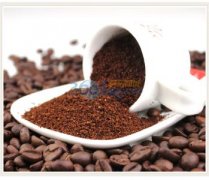The main producing areas and characteristics of Coffee in the World
Coffee production zone (commonly known as the coffee belt) is between 25 degrees north latitude and 30 degrees south latitude, covering many countries in Central, West Africa, Central Southeast Asia, the Pacific Ocean, Latin America, and the Caribbean. The reason why coffee cultivation is concentrated in this belt area is mainly limited by temperature. Because coffee trees are vulnerable to frost damage, latitude north or south are not appropriate, in tropical areas is appropriate, the heat and humidity of this area is ideal.

The ideal climate for coffee trees is the tropics on either side of the equator, where they benefit from ideal temperatures (24 ° C-26 ° C for robasta and 20 ° C-25 ° C for Arabica) and humidity (1 500 - 2 000 mm of annual precipitation), which is important for them. Robasta coffee needs to grow at sea level, while Arabica coffee needs to grow at higher altitudes (800 to 2,000 meters) in soil with strong acidity, which is necessary for its aroma. Arabica coffee grows well in mineral-rich, fertile and well-drained volcanic soils of Central America and the Caribbean.
Coffee trees are sensitive to high temperatures and often grow in the shadow of broadleaf trees like bananas; these trees protect them from direct sunlight, which kills coffee flowers. Banana trees are planted where they can shade coffee trees, which in turn provide shade for other plants planted beneath them, and so on. Coffee trees are also very sensitive to frost, and for this reason they are rarely grown above 2,000 metres.
At present, the most important coffee beans in the world mainly come from Arabic coffee, which is of better quality and more expensive.
China
China's coffee producing areas are mainly in Hainan, Yunnan and Guangdong; the north of Hainan Island in China and the south of Yunnan Province are located between 15 degrees north latitude and the Tropic of Cancer, which happens to be located in this golden zone. The coffee planted at day and night temperature is not too strong and bitter as South America, India and Africa, but strong but not bitter, fragrant but not strong, very unique. And with a little fruit flavor, is the coffee on the top grade, many international acclaim "the best quality coffee in the world" and by London international coffee market as "quality products, mellow first."
China China Taiwan
China Taiwan is located in the subtropical zone, mountainous territory, and there is an obvious rainy season, coffee, is a good growth environment, not since the introduction of coffee trees in Guangxu years, planting scale has not been. There are still small-scale cultivation, there are located in the mountains of Nantou Hui Lin (more than 1,000 meters above sea level), Yunlin Kukeng Hebao Mountain (294 meters above sea level) coffee by-product flavor is close to Central and South American beans, soft sour and good texture, taste mild, and Hui Lin coffee beans are said to be less acidic.
Brazil (Brazil)
Coffee production accounts for one-third of the world's total. Although it occupies an extremely important position in the entire coffee trading market, it is the largest producer country. However, because the Brazilian coffee industry has always adopted a low-cost, large-scale planting strategy, it produces coffee of average quality but less excellent grade, which is generally considered to be indispensable for blending coffee beans.
Colombia
Colombia is the world's second largest producer, accounting for 12% of the world's total production. Its coffee beans are of excellent quality. The coffee trees are planted in high places, cultivated in small areas, carefully harvested, and processed in wet conditions. The coffee produced is beautiful in quality, rich in flavor and unique, and is very suitable for drinking alone or mixed.
Jamaica
It is known as the origin of Blue Mountain Coffee. Coffee produced in Jamaica is polarized in quality, with coffee grown in lowlands of very average quality, but Jamaica Blue Mountain coffee produced in the highlands is regarded as the world's highest variety, considered the world's most famous, expensive and controversial coffee. It has all the substances of coffee, rich taste, rich, moderate and perfect sour taste, excellent blending of three flavors (sweet, sour and bitter), and is the grade of coffee. It is generally drunk as a single product.
Yemen-Africa
Yementong is Arabic, the birthplace of Arabica, once popular in the name of "mocha coffee", but now it is no longer popular. However, its mellow flavor, rich and mellow characteristics, is still quite popular with consumers after dinner coffee. Coffee from Brazil and Colombia is the same coffee that was selected as a blend coffee.
Guatemala
Some of the most distinctive coffees in the world are grown in Guatemala's central highlands. Its acidity is strong, the concentration is medium, the taste is rich, the taste is fragrant and mellow, but slightly takes the carbon to burn the flavor.
Hawaii
Conna on Hawaii's southwest coast produces one of the most famous and traditional Hawaiian coffees, Hawaii Conna. This coffee bean is grown only in Cona and is the only coffee produced in the United States. The volcanic soil of the Conner Coast breeds this rich, mellow coffee. The superior "Kona Kona" has a slight bouquet of wine in its moderate acidity, with a very rich taste and irresistible aroma.
Kenya (1998 - 1999)
Kenya, near East Africa, grows high-quality Arabica coffee beans. The beans are medium-large in size, very rich and flavorful, with moderate acidity. Kenya has a complete grading system, divided into seven grades according to the size of coffee beans, and divided into six grades according to the taste from top to bottom, of which "Kenya AA" is particularly well received.
Ethiopia
The origin of the name coffee, is from the southwest of Canada, and the south of West Tamar are the main places of origin. In addition, the Eastern Highlands are also known for coffee. The beans are small and fragrant, and "Hara. Mocha "," Longgu Bailey "and other special names, has a unique flavor, usually only known as mocha.
Indonesia (Indonesia)
The main producing areas are Sumatra, Java, Sulawesi. 90% of them are Robasta species, and their quality is ranked first in the world. Sumatra is best known for its rich, highest-grade mantinin. In addition, the northern part of the island also produces "Cayu Mountain", while Java's Arabica has a good sour taste and is especially loved by the Dutch. Sulawesi is produced by the large grain of "Kalosi", the southwest hilly region of the "Traga" local production of its representative.
Important Notice :
前街咖啡 FrontStreet Coffee has moved to new addredd:
FrontStreet Coffee Address: 315,Donghua East Road,GuangZhou
Tel:020 38364473
- Prev

Coffee common sense unveils the mystery of Jamaican Blue Mountain Coffee
Most people know that the price of a cup of real Jamaican Blue Mountain coffee should be in the triple digits, but did you know that not all blue beans can brew the flavor of Jamaican Blue Mountain coffee? Because the authentic Jamaican Blue Mountain Coffee flavor is a combination of beans and processing technology, rather than simple imported blue mountain beans. Jamaican Blue Mountain Coffee has always been a divine presence in China.
- Next

Arabica coffee originated from the common sense of Ethiopian coffee.
Ethiopia is a coffee-producing country with many legends, numerous varieties, rich orange fragrance and many fresh things, and there is no second country in the world that can compete with it. Ethiopia's long coffee history and cultural scenery have attracted a large number of explorers, archaeologists, botanists, anthropologists and writers to Fangze. The sleeping lion of Africa suddenly woke up after the millennium and burst into bursts.
Related
- Beginners will see the "Coffee pull flower" guide!
- What is the difference between ice blog purified milk and ordinary milk coffee?
- Why is the Philippines the largest producer of crops in Liberia?
- For coffee extraction, should the fine powder be retained?
- How does extracted espresso fill pressed powder? How much strength does it take to press the powder?
- How to make jasmine cold extract coffee? Is the jasmine + latte good?
- Will this little toy really make the coffee taste better? How does Lily Drip affect coffee extraction?
- Will the action of slapping the filter cup also affect coffee extraction?
- What's the difference between powder-to-water ratio and powder-to-liquid ratio?
- What is the Ethiopian local species? What does it have to do with Heirloom native species?

